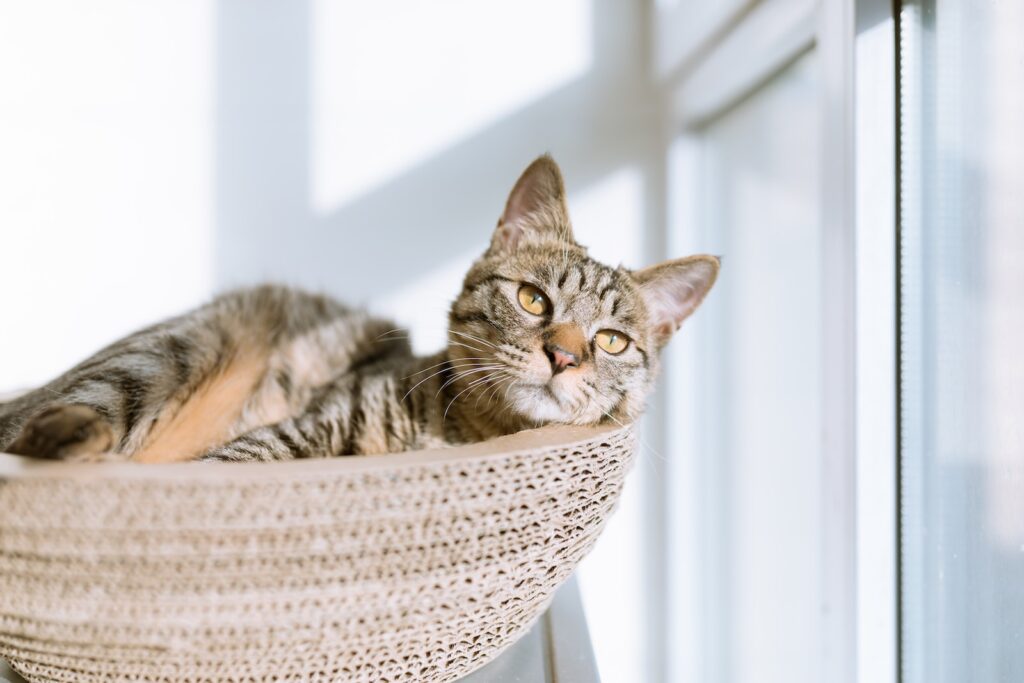Can Cats Eat Pate? — Yes, They Can
Cats can definitely eat pate. It is a safe and nutritious food option for them. Pate is a soft, moist texture that cats find easy to eat and digest. It is typically made from finely ground meat, fish, or poultry, combined with other ingredients to create a smooth paste-like consistency. Cats often enjoy the rich flavors and aroma of pate, making it an appealing food choice for them. However, as with any food, it is important to feed pate to cats in moderation and as part of a balanced diet.
Can Kittens Eat Pate?
Yes, kittens can also eat pate. The soft texture and easily chewable nature of pate make it suitable for kittens as well. However, it is essential to choose a pate that is specifically formulated for kittens to ensure they receive the necessary nutrients for their growth and development. Kittens have different nutritional needs compared to adult cats, so it is crucial to select the right type of pate that meets their requirements.
Things to consider when feeding pate to kittens?
When feeding pate to kittens, it is important to consider their age, size, and specific dietary needs. Opt for pate that is formulated for kittens to ensure it provides the appropriate balance of nutrients. Additionally, kittens have smaller stomachs, so it is recommended to feed them smaller portions of pate more frequently throughout the day. Always consult with a veterinarian for guidance on feeding pate to kittens.
Nutritional Benefits of Pate for Cats — Why Pate is Good for Cats?
1. High-Quality Protein Source
Pate is typically made from high-quality sources of protein such as meat, fish, or poultry. Protein is essential for cats as it supports growth, muscle development, and overall health. The protein content in pate helps fulfill the nutritional requirements of cats, making it a beneficial food option.
2. Moisture Content
Pate has a high moisture content, which can contribute to a cat’s overall hydration. Cats have a low thirst drive, and their water intake mainly comes from the food they consume. Adding moist foods like pate to their diet can help prevent dehydration and promote healthy kidney function.
3. Nutrient Variety
Pate often contains additional nutrients such as vitamins and minerals, which can further enhance a cat’s diet. These nutrients support various bodily functions, including immune system health, skin and coat condition, and overall vitality.
4. Easy to Digest
The smooth and soft texture of pate makes it easy for cats to digest. It is especially beneficial for cats with dental issues or older cats who may have difficulty chewing hard food. The easily digestible nature of pate ensures that cats can efficiently absorb the nutrients from their food.
5. Palatability
Cats are known for their discerning palates, and many find pate highly palatable. The appealing flavors and aromas of pate can stimulate a cat’s appetite, making mealtime more enjoyable for them. Increased palatability encourages cats to eat an adequate amount of food, ensuring they receive the necessary nutrition.
Potential Allergies: Can Cats Be Allergic to Pate?
While it is rare, some cats may develop allergies or sensitivities to certain ingredients present in pate. Common allergens include grains, soy, dairy, and certain types of meat or fish. If you suspect your cat is allergic to pate, monitor them for symptoms such as itching, gastrointestinal distress, or respiratory issues after consuming it. If any allergies are suspected, consult with a veterinarian to determine the appropriate course of action.
Symptoms of Pate Allergies in Cats
- Itching and Skin Irritation: Cats with allergies to pate may experience excessive itching, redness, or rashes on their skin.
- Gastrointestinal Distress: Allergies can cause vomiting, diarrhea, or constipation in cats after consuming pate.
- Respiratory Issues: Some cats may develop respiratory symptoms like sneezing, coughing, or wheezing due to pate allergies.
What to Do If Your Cat Shows Symptoms?
- Consult a Veterinarian: If you notice any symptoms of allergies in your cat after they consume pate, it is important to seek veterinary advice. A professional can diagnose the allergy and recommend suitable alternatives or treatment plans.
- Elimination Diet: In some cases, an elimination diet may be suggested to identify the specific ingredient causing the allergic reaction. This involves removing pate from the diet and gradually reintroducing it while monitoring for symptoms.
- Alternative Food Choices: If your cat is allergic to pate, there are various alternatives available, such as hypoallergenic cat foods or homemade meals prepared under veterinary guidance.
Recommended Amount: How Much Pate Can a Cat Consume?
The recommended amount of pate a cat can consume depends on several factors, including their age, weight, activity level, and overall health. As a general guideline, it is recommended to feed adult cats approximately 1/4 to 1/2 cup of pate per day, divided into multiple small meals. However, it is essential to consult with a veterinarian to determine the specific dietary requirements for your individual cat.
Things to Consider When Feeding Pate to Cats
When feeding pate to cats, it is important to consider the following:
- Use High-Quality Brands: Choose pate from reputable brands that prioritize nutritional quality and use wholesome ingredients.
- Monitor Weight: It is crucial to monitor your cat’s weight and body condition to ensure they are not becoming overweight or underweight. Adjust the amount of pate accordingly.
- Balanced Diet: Pate should be part of a balanced diet that includes a variety of foods to provide all the necessary nutrients. Consider incorporating other cat-friendly foods such as kibble, treats, or wet food to ensure a well-rounded diet.
How to Feed Pate to Cats: A Quick Guide
Feeding your cat pate can be a delightful experience for both you and your feline friend. Here’s a quick guide to ensure a satisfying mealtime:
Salmon Pate
Create a delicious homemade treat with this simple salmon pate recipe:
Ingredients:
- 1 can of salmon
- 1/4 cup of cooked and mashed sweet potatoes
- 1/4 cup of plain yogurt
- 1 tablespoon of chopped fresh catnip (optional)
Instructions:
- Drain the salmon and remove any bones or skin.
- In a bowl, combine the salmon, mashed sweet potatoes, yogurt, and chopped catnip (if using).
- Mix well until all the ingredients are blended into a smooth consistency.
- Serve a small portion of the salmon pate to your cat as a special treat.
Conclusion
Pate can be a nutritious and enjoyable food option for cats. It provides them with high-quality protein, essential moisture, and a variety of nutrients. However, it is essential to feed pate in moderation, consider any potential allergies, and ensure it is part of a balanced diet. Consulting with a veterinarian and monitoring your cat’s overall health and well-being is crucial in providing the best dietary choices for your feline companion.






